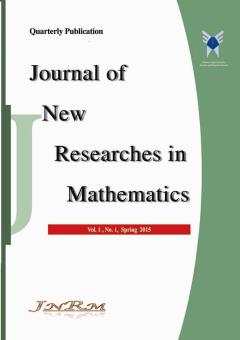حدس بردون-شاپیرو
الموضوعات :
1 - گروه ریاضی، دانشکده علوم پایه، دانشگاه یاسوج، یاسوج، ایران
الکلمات المفتاحية: فضای هاردی, عملگر ترکیبی, خودریختی بیضوی, برد عددی,
ملخص المقالة :
برد عددی عملگرهای ترکیبی روی فضای هاردی که نماد آنها بیضوی از مرتبه متناهی باشد گوی نیست. این حدسی است که بردن و شاپیرو در سال 2000، سال جهانی ریاضیات، مطرح نموده اند. در این چند سال تلاش هایی برای اثبات یا رد آن صورت گرفته ولی هنوز جواب کامل بدست نیامده است. بردن و شاپیرو این سوال را که در چه صورت برد عددی یک عملگر ترکیبی، گوی به مرکز مبدا است را مورد بررسی قرار داده و آن را وقتی نماد عملگر ترکیبی، خودریختی همدیس بیضوی نباشد، ثابت کردند. آنها همچنین نشان دادند اگر خودریختی بیضوی از مرتبه 2 باشد آنگاه برد عددی بیضی با کانون های ±1 است. اخیرا پاتون و همکاران مساله را برای هر عملگر خطی کراندار از مرتبه ۳ ثابت کردند. بویژه پاتون نشان داد که برد عددی عملگرهای ترکیبی روی فضای هاردی با چندجمله ای مینیمال z^3-1، گوی نیست.ما در این پژوهش ثابت می کنیم این حدس برای خانواده بزرگی از این نوع عملگرها درست است.
[1] A. Abdollahi, The numerical range of a composition operator with conformal automorphism symbol, Linear algebra appl., vol. 408 (2005),177-188.
[2] P. S. Bourdon and J. H. Shapiro, The numerical range of automorphic composition operators, J. Math. Anal. Appl., 251 (2000), 839-854.
[3] P. S. Bourdon and J. H. Shapiro, When is zero in the numerical range of a composition operator, Integr. Equ. Oper. Theory 44 (2002), 410-441.
[4] S. L. Burnett, A. Chandler, L. J. Patton, Symmetric numerical ranges of four-by-four matrices, Involve, a Journal of Mathematics, 11 (2018) (5), 803-826.
[5] C. C. Cowen and B. D. Maccluer, Composition operators on spaces of analytic functions, CRC Press, Boca Raton, 1995.
[6] Y-X. Gao, Y. Liang, Y. Wang, Z-H. Zhou, Numerical ranges of composition operators with elliptic automorphism symbols, Banach Journal of Mathematical Analysis,17(3) DOI:10.1007/s43037-023-00264-3.
[7] K. E. Gustafon and K. M. Rao, The numerical range, the field of values of linear operators and matrices, Springer, New York. 1997.
[8] J. Guyker, on reducing subspaces of composition operators, , Acta Sci. Math. (Szeged) 53. (1989), 369376.
[9] P. R. Halmos, A Hilbert space problem Book, second ed. , Springer, New York, 1982.
[10] T.R. Harris, M. Mazzella, L.J. Patton, D. Renfrew, I.M. Spitkovsky, Numerical ranges of cube roots of the identity, Linear Algebra Appl. 435 (2011) 2639–2657
[11] M. T. Heydari, A. Abdollahi, The numerical range of finite order elliptic automorphism composition operators, Linear Algebra and its Applications 483 (2015) 128–138
[12] R. A. Horn, C. R. Johnson, Matrix Analysis, Cambridge University Press, 1985.
[13] J. E. Littlewood, On inequalities in the theory of functions, Proc. London Math. Soc. 23 (1925), 481519.
[14] V. Matache, Numerical ranges of composition operators, Linear algebra appl., 331 (2001), 61-74
[15] V. Matache, Aleksandrov Operators and Numerical Ranges of Composition Operators with Inner Symbols, to appear.
[16] L.J. Patton, Some block Toeplitz composition, J. Math. Anal. Appl. 400 (2013) 363–376
[17] W. Rudin, Real and complex analysis. Third edition, McGraw-Hill Book Co., New York, 1987.
[18] J. H. Shapiro, Composition Operators and Classical Function Theory, Springer-Verlag, 1993.
[19] R. K. Singh and J. S. Manhas, Composition operators on function spaces, North-Holland Publishing Co., Amsterdam, 1993.


